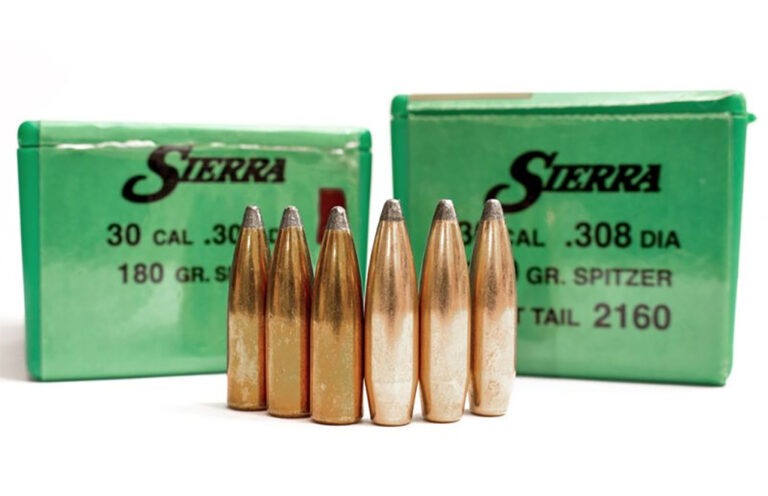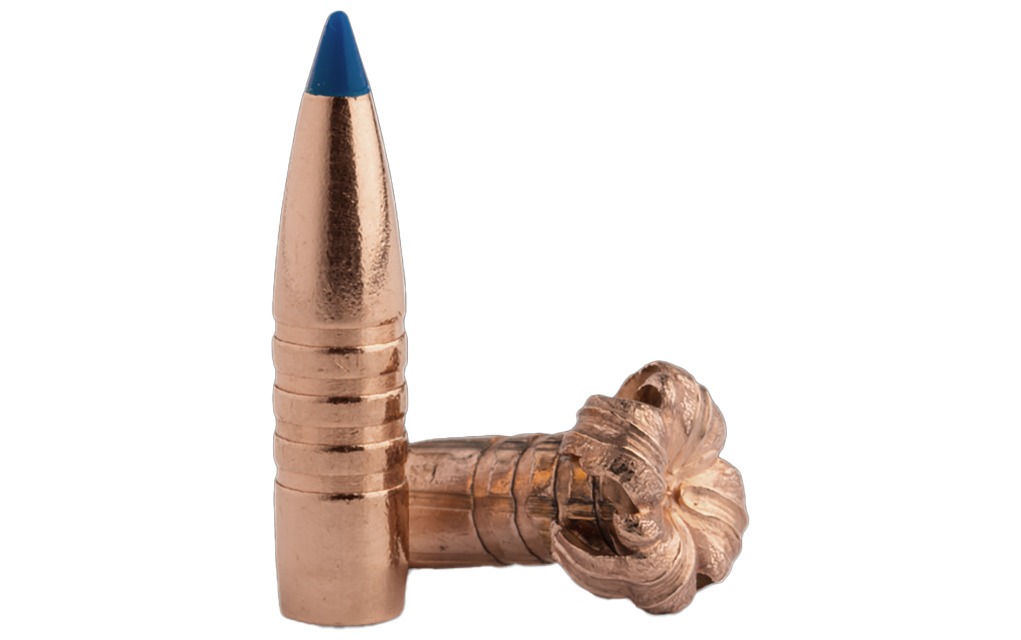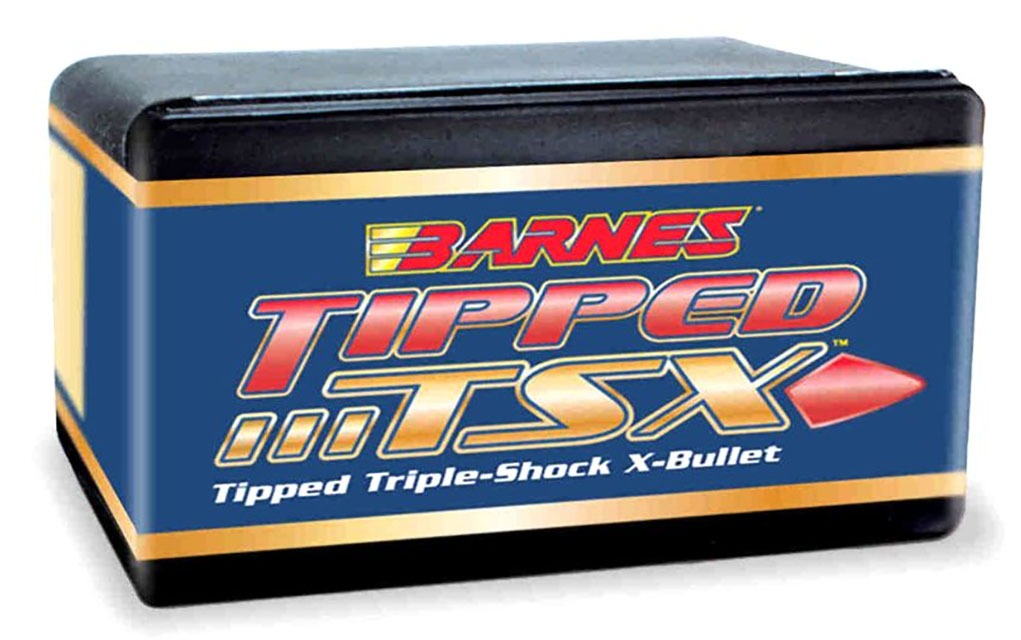
For some hunting rounds, the backside of the bullet is just as important as the front.
Regarding our choice of projectile, we reloaders have the world at our feet; if it’s available in component form, we can load it. During the past few decades, the conformation of our projectiles has changed radically, with some of the sleekest and highly technological designs ever seen. Yet, designs dating back as far as the later part of the 19th century remain effective, especially for those reloading their ammunition for hunting.
The round-nosed jacketed bullets so familiar to the lever-action community are just as deadly as they were a century ago, within a certain range. These are, invariably, flat-based bullets, which will carry their weight forward, and a considerable amount of the bullet will be outside the case. Compare that with the latest target bullet—like the Hornady A-Tip—and you’ll see a much longer bullet, which will be seated deep into the case, almost without exception with the base of the bullet below the case shoulder.
Flat-Base Spitzer
The flat-based spitzer bullet was the hero of the early 20th century because it offered an unprecedented downrange advantage over the round-nosed projectiles. While America was making the transition from the .30 U.S. Army—better known as the .30-40 Krag—to the .30-03 Springfield, they carried forward the 220-grain round-nose projectile. Most of the European armies have switched to the lighter spitzer designs, and America followed suit, revising the new cartridge to use a 150-grain spitzer bullet at a higher velocity, and the .30-06 Springfield was born.

The flat-base spitzer bullet is still a perfectly sound design, especially for hunters. Classics like the Nosler Partition, Speer Grand Slam, Hornady InterLock (certain models), SST and Swift A-Frame are all flat-based spitzers. I like them for the way they carry their weight forward, out of the case mouth, leaving room for the powder charge. In cartridges like the .308 Winchester, where real estate is at a premium, I like the flat-based bullets—especially when my shots are less than 250 yards.
Boat-Tail Spitzer
It's absolutely true that a boat-tail bullet with a sleek ogive will offer a flatter trajectory than will a flat-based spitzer that more closely resembles the G1 model, but you probably won’t see any of the benefits until you get past the 300-yard mark, because it generally takes the bullet longer to “settle down” during flight.
I’ve always felt that boat-tail bullets are easier to seat and found that they tend to have less runout. A good chamfer on your case mouth is certainly required for easy seating, and should you be loading one of the VLD (Very Low Drag) bullets, you might want to reach for a VLD chamfer tool, which increases the angle of the chamfer to match the more severe boat-tail angle of the highest ballistic coefficient designs. In addition, a seating stem designed for the longer and sleeker bullets will minimize the risk of ogive deformation.
Apples and Oranges
To give some insight into the differences between the varying bullet shapes, I measured three different 180-grain, .30-caliber bullets: Nosler Partition (flat-base spitzer), Barnes TTSX (spitzer boat-tail, monometal) and Sierra GameKing (cup-and-core spitzer boat tail). Because they’re all the same caliber, only the length of the bullet can vary.

The Barnes monometal is the longest (copper being lighter than lead) and measures 1.490 inches. With four grooves cut into the shank of the bullet, the TTSX has its 0.697-inch bearing surface reduced in order to keep pressures low and minimize fouling. The Sierra GameKing measures 1.264 inches, with a bearing surface of 0.376 inch, according to my caliper. The flat-based Nosler Partition isn’t all that much shorter than the Sierra boat-tail, measuring 1.254 inches, but it has a bearing surface measuring roughly 0.600 inch. Because of the larger amount of bearing surface, it’d be a logical deduction that the Partition would reach maximum acceptable pressure first and with the least amount of powder of the three choices.

These differences in bearing surfaces are also another good indicator as to why there are such wide variances in load data for different bullets, even if of the same weight and caliber. If the loaded cartridges all have the same overall length, it’s easy to see how the monometal Barnes bullet is going to be seated deep into the case, well below the shoulder/neck junction.
In the terminal phase, a traditional cup-and-core boat-tail bullet runs the risk of jacket/core separation; I’ve seen it with nearly all brands of cup-and-core bullet, though I must admit those bullets were recovered from dead animals. Bonding the core to the jacket, or choosing a monometal projectile, can overcome that issue on big game. For those pursuing furbearers and varmints, bullet separation isn’t an issue—and often desirable—as the hydrostatic shock generated results in a quick kill and can reduce the chances of pelt damage.
If your rifle shoots a boat-tail bullet accurately, I see no reason not to use it … even if you only shoot at relatively short distances. You might not be using all of the bullet’s potential, but it’ll work. If you shoot a cartridge that has limited case capacity—the .308 Winchester, .300 Savage, .350 Remington Magnum—look to those bullets on the shorter side in order to prevent over-compression of the powder column. Larger-capacity cases offer much more flexibility, so even the longest boat-tail spitzer bullets might not pose an issue.
I’ve found that a flat-based bullet can help solve some accuracy issues in a rifle with a less-than-perfect crown.
The escaping gases from a crown that might be out-of-round has a more pronounced effect on a boat-tail bullet than their flat-based counterparts. I do like the premium boat-tail bullets in those faster cartridges I use for hunting at longer ranges, like the .300 Winchester Magnum, .300 H&H Magnum and 6.8 Western. I won’t shy away from using a classic bullet like the Nosler Partition at those distances, which I feel confident shooting at game; however, my target loads most definitely feature the highest B.C. spitzer I can get to shoot accurately.
Editor's Note: This article originally appeared in the October 2022 issue of Gun Digest the Magazine.
More On Reloading:
- Tips For Reloading the .30-06 Springfield
- Loving Your Luger: Reloading the 9mm Luger
- Handloading: Tips For Reloading The 7mm Rem Mag
- How To: Tips For Reloading the .223 Remington
- Reloading Bench: The Inside On Reloading For The .30-30 Winchester

Next Step: Get your FREE Printable Target Pack
Enhance your shooting precision with our 62 MOA Targets, perfect for rifles and handguns. Crafted in collaboration with Storm Tactical for accuracy and versatility.
Subscribe to the Gun Digest email newsletter and get your downloadable target pack sent straight to your inbox. Stay updated with the latest firearms info in the industry.

![Best Concealed Carry Guns In 2025 [Field Tested] Wilson Combat EDC X9S 1](https://gundigest.com/wp-content/uploads/Wilson-Combat-EDC-X9S-1-324x160.jpg)


![Best 9mm Carbine: Affordable PCCs [Tested] Ruger Carbine Shooting](https://gundigest.com/wp-content/uploads/Ruger-Carbine-Shooting-100x70.jpg)
![Best AR-15: Top Options Available Today [Field Tested] Harrington and Richardson PSA XM177E2 feature](https://gundigest.com/wp-content/uploads/Harrington-and-Richardson-PSA-XM177E2-feature-100x70.jpg)
